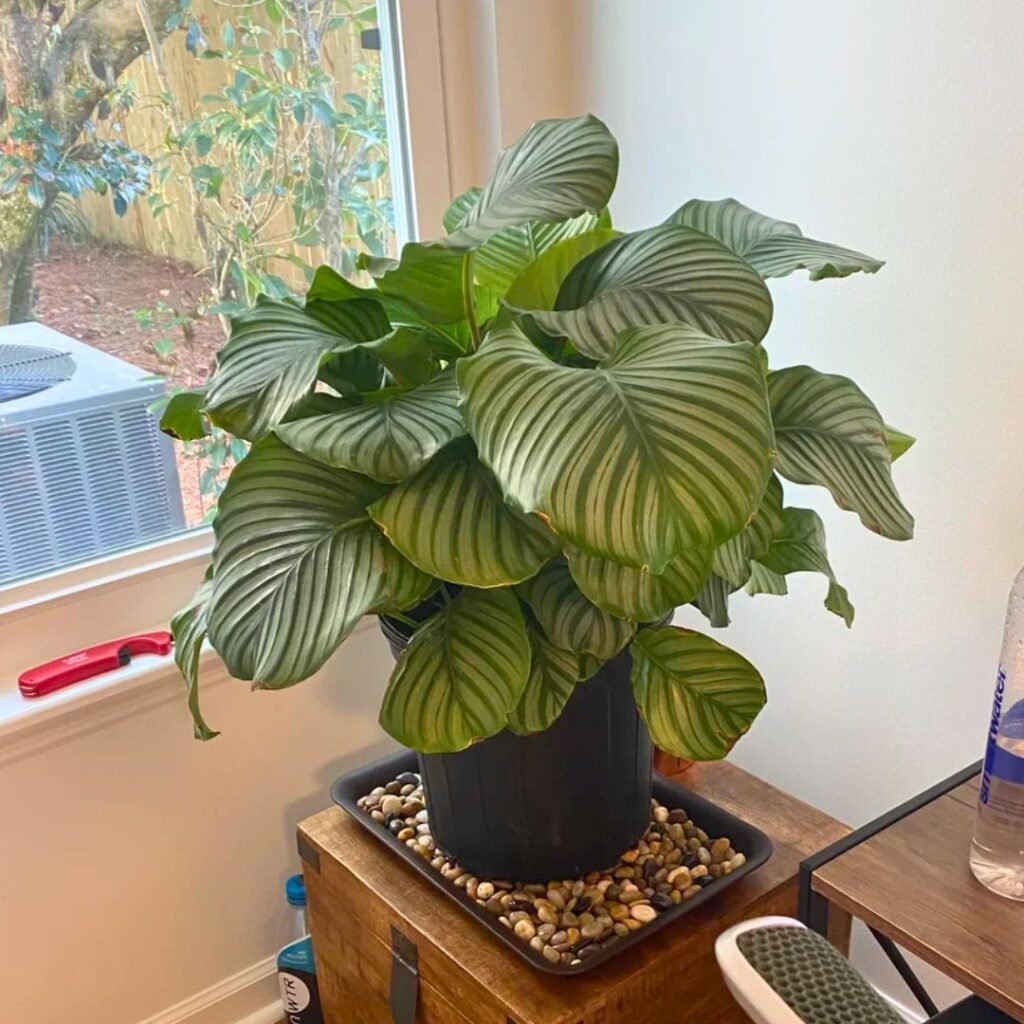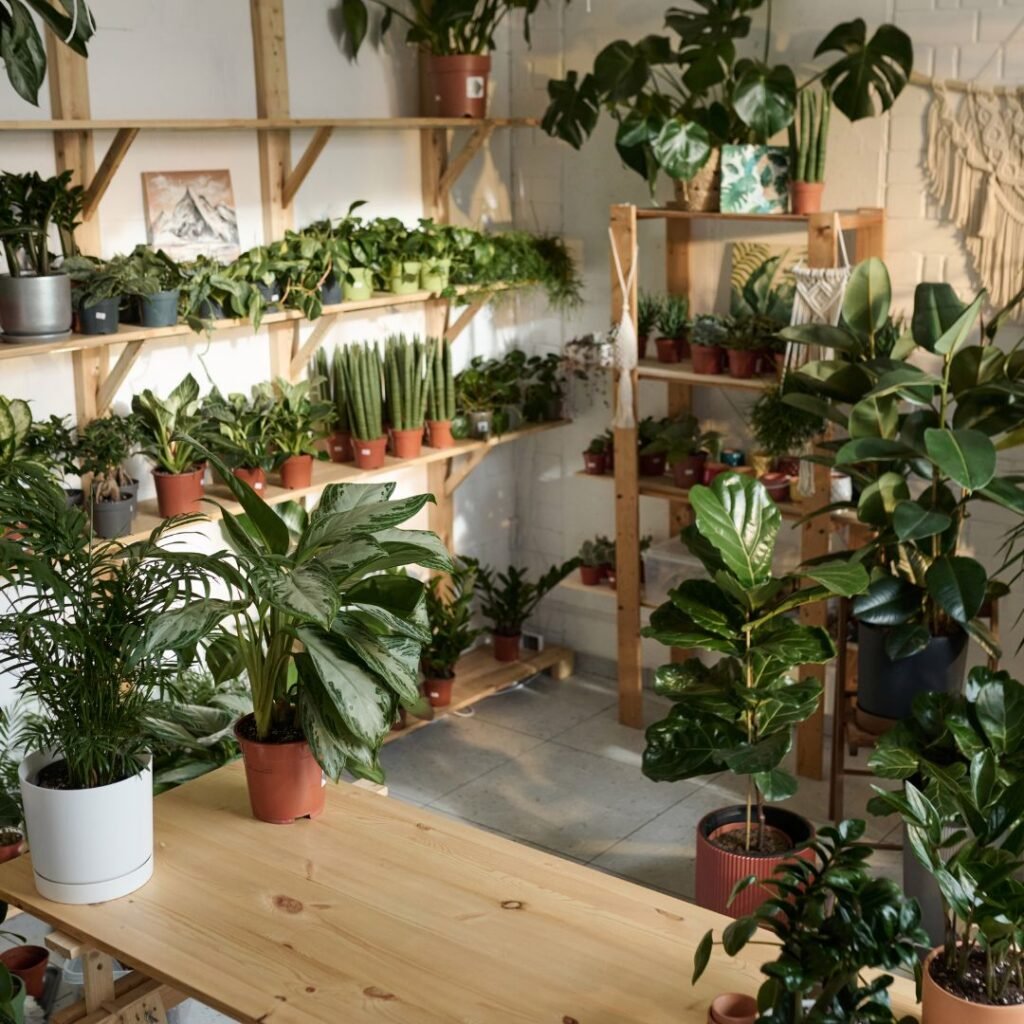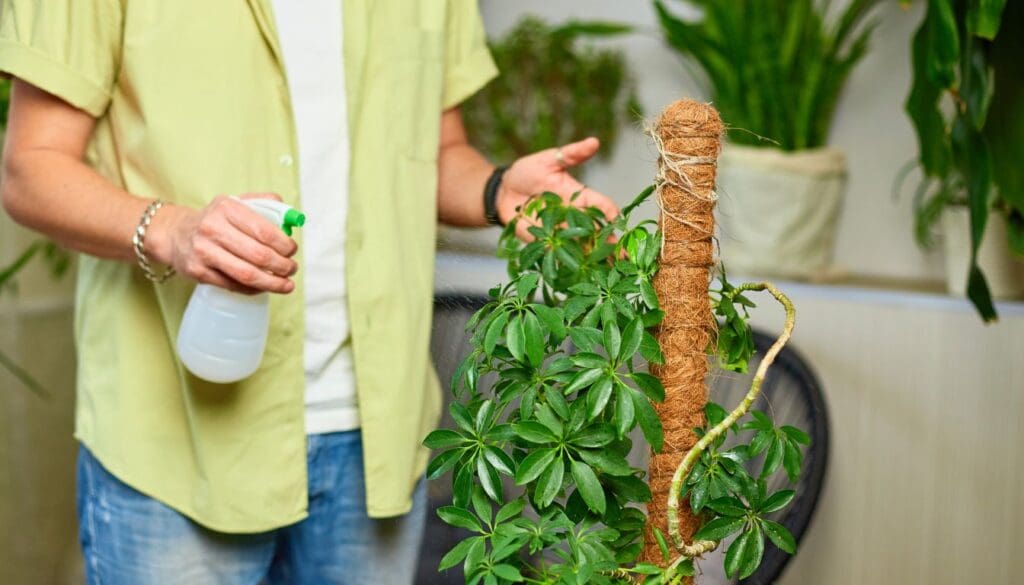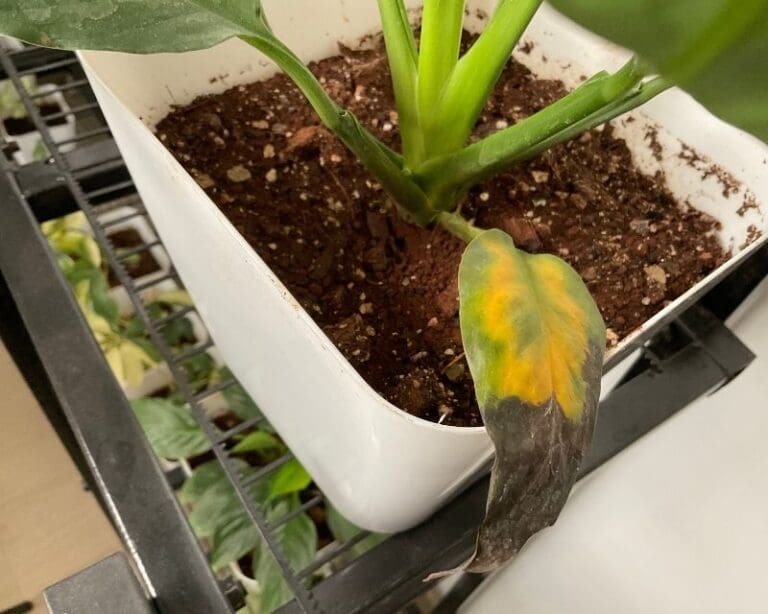5 Clever Ways to Boost Humidity for Tropical Plants
I really enjoy caring for tropical plants, even though they can be a bit fussy indoors. Getting the right humidity makes such a difference in how they grow and look.
Sometimes, the air in my house just feels way too dry for these plants. That’s why I’m always on the lookout for simple, clever ways to boost humidity around them.
Please note: Simplify Plants is reader-supported. As an Amazon Associate, I earn from qualifying purchases made by our readers with no extra cost added to you all! Some links in the post are affiliate links and I get a commission from purchases made through links in the post.
1) Use a pebble tray filled with water under your plant pots

Honestly, I love using a pebble tray to give my tropical plants a humidity boost. I just grab a shallow tray and toss in some clean pebbles or stones.
Next, I pour in some water until it covers the pebbles about halfway. The trick is to keep the plant pot above the waterline, so the pot sits on the pebbles, not soaking in water.
As the water evaporates, it adds moisture to the air right around my plants. I’ve noticed their leaves stay fresher, and those annoying brown tips show up a lot less.
I check the tray every couple of days to see if it needs refilling. If the water’s low, I just top it up. Sometimes I rinse the pebbles, too—keeps things tidy.
This method is honestly so easy and cheap. It’s perfect for small houseplants and doesn’t hog space on my windowsill or shelf.
I find it’s especially helpful during winter or when the air indoors feels extra dry. It won’t turn your whole room into a rainforest, but it does make a difference right where the plants are.
No fancy gadgets required, just a little tray and some pebbles. For me, it’s a go-to for keeping my tropical plants happy.
2) Group tropical plants together to create a humid microenvironment

When I cluster my tropical plants together, I swear the air around them just feels damper. Plants naturally release moisture through tiny pores in their leaves.
If you group a bunch of them, that moisture really adds up and bumps up the humidity nearby.
Grouping plants is kind of like making a mini jungle. The overlapping leaves even help slow down how quickly the soil dries out.
I like mixing things up with different shapes and sizes. Tall plants give a bit of shade, while bushy ones seem to hold onto extra moisture.
That way, you get this cozy, humid zone that tropical plants really seem to love.
If I’m ever worried about pests or diseases, I just make sure not to cram the plants too close. Good airflow is still a must, so I leave a little breathing room.
Sometimes I’ll put the group near a window for light, which keeps them happy and helps keep that moist, warm vibe going.
I also check the soil more often, since humidity can make it stay damp longer. Grouping plants is honestly one of the easiest tricks I’ve found, and it doesn’t cost a thing.
3) Mist leaves daily with a spray bottle filled with room-temperature water

I like to grab a spray bottle with room-temperature water and mist my tropical plants almost every day. It’s a quick way to give them extra moisture right on their leaves.
Misting adds a bit of humidity for a few hours, and I usually do it in the morning so the leaves have time to dry out. That way, I don’t have to worry about mold or rot sneaking in.
Room-temperature water is a must—cold water can shock them, and hot water is just… not great. I keep my spray bottle nearby to remind myself to mist regularly.
I make sure to spray a fine mist on both the tops and undersides of the leaves. No need to soak them—just a light mist does the trick.
Misting is fast, easy, and works for pretty much any tropical houseplant. Plus, it just makes the leaves look fresh.
4) Place a humidifier nearby

I’ve started using a humidifier to keep my tropical plants happy, and honestly, it’s made a big difference. The Levoit LV600HH is a favorite because it’s simple to use and pumps out plenty of moisture.
When I set the humidifier close to my plants, their leaves stay lush and green. Plants need more humidity, especially if indoor heating or AC is drying out the air.
I can adjust the settings and pick warm or cool mist, which is handy. Running it for a few hours a day usually gets the humidity just right.
I always remember to refill and clean the water tank. That keeps the mist clean and stops any mold or bacteria from building up.
I usually put the humidifier on a small table near my plant shelf. That way, the mist floats up and reaches all the leaves.
I keep an eye on the humidity with a little gauge, aiming for 50% to 70% for most tropicals.
Using a humidifier like the Levoit LV600HH lets me dial in the moisture exactly how I want it. It’s easy and gives me peace of mind knowing my plants are comfy.
5) Cover plants with a clear plastic bag occasionally for a quick humidity boost

Sometimes, if my tropical plants look a bit stressed, I’ll use a clear plastic bag for a quick humidity fix. This one’s best for small plants.
I gently slip a clear bag over the plant, making sure not to squish the leaves. I always leave the bag open at the bottom so air can get in.
The bag traps moisture and acts like a mini greenhouse. It’s perfect for raising humidity fast, especially if my house feels super dry.
I never leave the bag on too long—just a few hours or maybe overnight. If you leave it longer, you risk mold or rot.
I also make sure the plant isn’t in direct sunlight while covered, since the bag can heat up quickly.
After taking the bag off, I check the soil to see if it’s too wet. If it is, I hold off on watering for a bit.
It’s a cheap and easy trick, and I always keep a few plastic bags handy for emergencies.
Understanding the Importance of Humidity for Tropical Plants
Tropical plants really do need more moisture in the air than most houseplants. If I get the humidity right, my plants just seem to grow better and look healthier.
How Humidity Influences Plant Growth
Humidity affects how tropical plants absorb water and nutrients. When the air’s too dry, water leaves the plant’s leaves faster than the roots can keep up, which can dry them out.
In higher humidity, tropical plants keep their leaves hydrated and breathe easier. That helps with photosynthesis, which is basically how they make food from sunlight.
Some plants—like ferns and calatheas—only show their best colors and leaf shapes when the humidity’s just right.
Here’s a quick chart of the best humidity levels for some common tropicals:
| Plant Type | Ideal Humidity (%) |
|---|---|
| Ferns | 60–80 |
| Monstera | 50–60 |
| Calathea | 60–80 |
| Orchids | 50–70 |
If I keep these numbers steady, I don’t see as many crispy leaves or slow growth.
Signs Your Tropical Plants Need More Humidity
When humidity drops, my tropical plants start sending out warning signs. The first thing I notice is brown leaf edges or tips.
Leaves might curl, wilt, or just look kind of sad and dull.
Sometimes the soil dries out way too fast, which means the air is stealing water before the roots can grab it. Flower buds might drop before opening, and leaves can get thin or papery.
Here’s what I watch for if my tropicals need more humidity:
- Brown, crispy edges on leaves
- Leaf curling or drooping
- Flowers dropping early
- Slow new growth
When I spot these, I know it’s time to step up the humidity.
Long-Term Strategies for Maintaining Ideal Humidity

Keeping tropical plants healthy means making sure the air stays humid year-round. I like to use simple tricks and tools that don’t take much time or money.
Creating a Consistent Indoor Environment
I always keep my plants away from vents, heaters, and drafty windows. Sudden temperature swings dry out the air fast, and my tropicals are not fans.
I group my plants together to make a mini microclimate where the air feels wetter, since the plants breathe out moisture.
I also use humidifiers in rooms with lots of tropicals. I’ll run one for a few hours each day and just refill as needed.
To keep moisture from escaping, I use trays with pebbles and water under each plant. That way, moisture evaporates gently and steadily.
Sometimes, I’ll use glass cloches or even make a little greenhouse from clear storage bins for young or delicate plants.
Monitoring Humidity Levels Efficiently
I check the room’s humidity with a digital hygrometer. I aim for 50% to 70%. Anything lower, and the leaves start getting crispy.
Setting a reminder on my phone helps me remember to check humidity each week. If numbers drop, I add water to trays or run the humidifier longer.
I keep a short log of humidity changes. Jotting down numbers and notes helps me spot patterns—like when winter heat dries out the air—so I can tweak my routine before my plants get stressed.
Frequently Asked Questions
I’m always asking myself how to keep my tropical houseplants healthy indoors, especially when it comes to getting the humidity and temperature right. With a few simple tricks, I’ve actually found it’s possible to help my plants thrive, even when the air’s pretty dry.
What are some natural methods to raise humidity levels for my indoor tropical plants?
I use a pebble tray filled with water under my plant pots. As the water evaporates, it bumps up humidity right around my plants.
Grouping tropical plants together works too, creating a small, humid zone that keeps them all happier.
Misting the leaves daily with room-temperature water is another go-to. It’s quick and gives them a nice little moisture boost.
Can I use a humidity tray effectively for my tropical plants, and how?
Yep! I place a shallow tray with pebbles and water under my plant pots, making sure the pot sits on the pebbles and not in the water.
As the water evaporates, it gently raises humidity around the plants, which they seem to love.
What are the ideal temperature and humidity ranges for keeping tropical plants healthy?
I try to keep my room temperature somewhere between 65–80°F (18–27°C).
Tropical plants really seem to thrive when humidity sits around 50% to 80%. That range just keeps the leaves looking green and happy.
During the winter months, how can I maintain adequate humidity for my tropical plants?
Indoor heating tends to dry out the air a lot in winter. I usually set up a humidifier near my plants, or just mist them a bit more often.
Sometimes, I like to group my plants together so they can share a little extra moisture.
Without using a humidifier, what are the best ways to increase humidity for plants in a grow tent?
Inside a grow tent, I’ll place open bowls or trays of water to let moisture slowly evaporate.
Occasionally, I’ll lay a damp towel or cloth nearby. These little tricks help bump up the humidity, even if you don’t have a humidifier handy.
What tips do people on Reddit suggest for boosting humidity around tropical houseplants?
A lot of folks on Reddit mention covering plants with a clear plastic bag for short periods to help trap moisture. It’s a bit of a DIY greenhouse trick, honestly.
Some swear by using several humidity trays and grouping their plants close together. Others go for daily misting or even set up tiny indoor fountains—those add both humidity and, let’s be honest, a pretty soothing vibe to the room.
Note: Some images in the articles are sourced from Reddit and Other Platforms For Reference Purpose.





